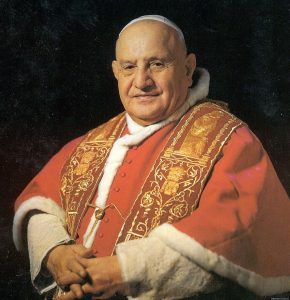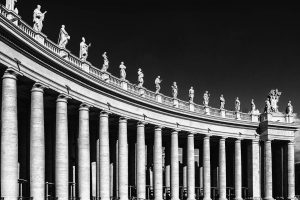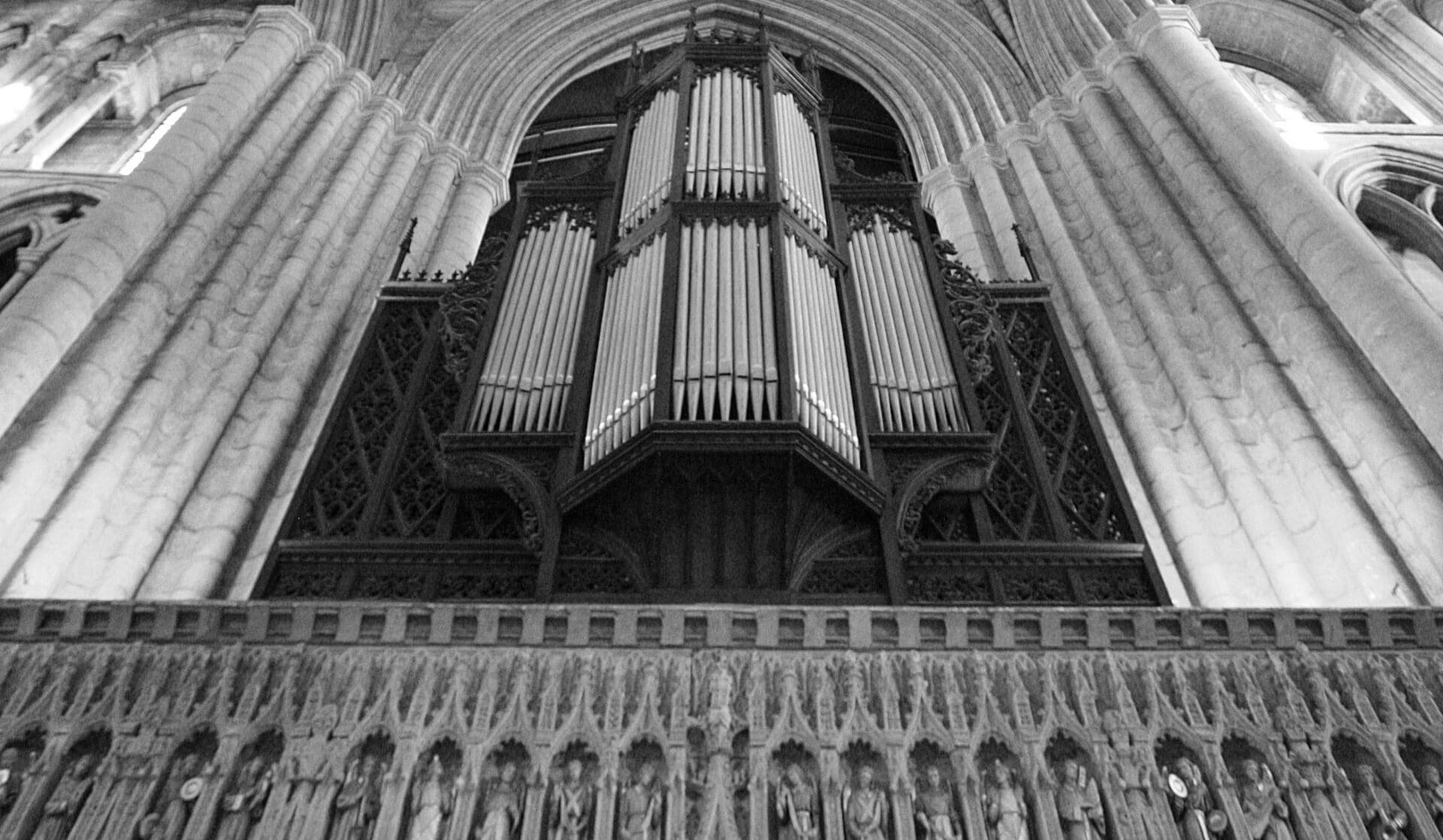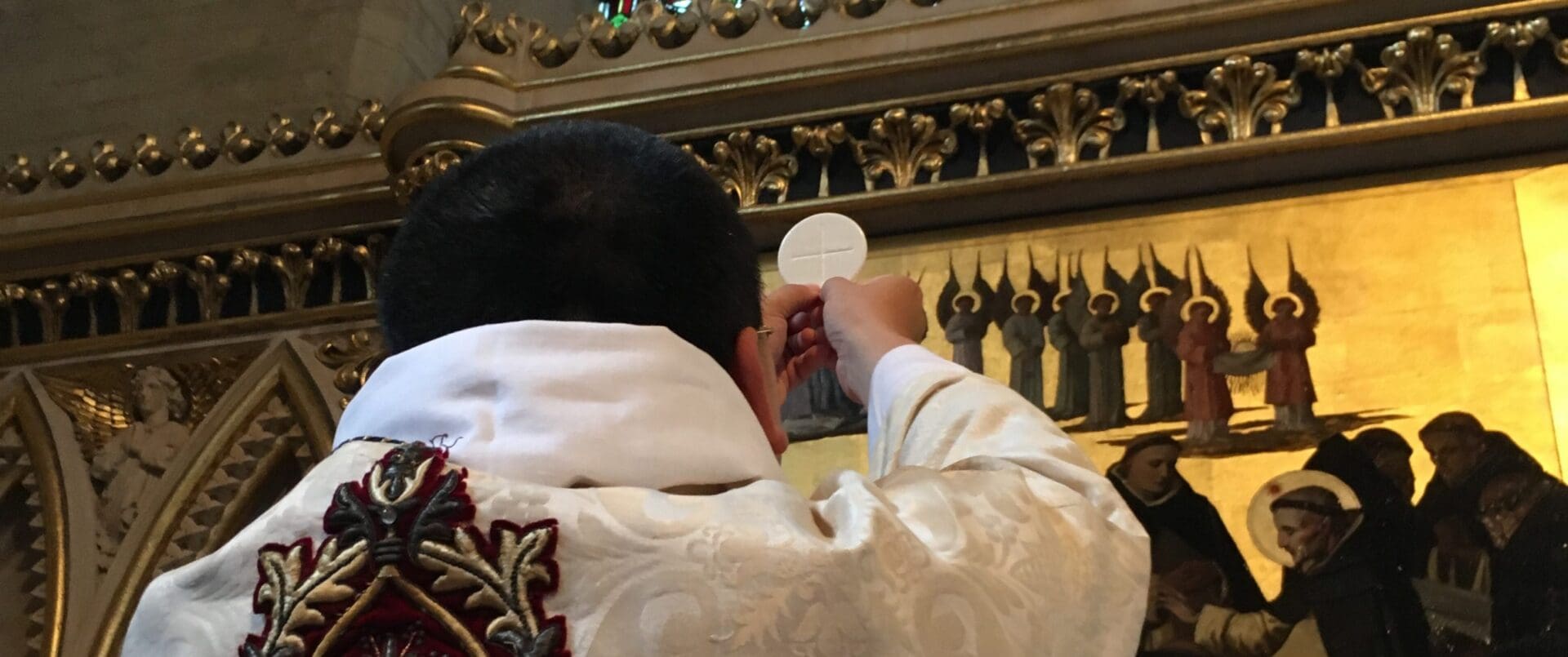Just days before the opening of the Second Vatican Council, Pope John XXIII delivered a now little-known allocution at the blessing of the newly renovated pipe organ in St. Peter’s Basilica.1 While it may seem unremarkable that the pope would say a few words on such an occasion, his text gives an intriguing theological explanation of the nature of the pipe organ in Catholic worship not found in other ecclesiastical documents.

Surprisingly, official Church documents say relatively little about the foundational theology of the pipe organ itself. Sacrosanctum Concilium treats the organ in one sentence, stating that it should be held in “high esteem” because it is “the traditional instrument” which adds a “wonderful splendor” and “lifts minds up to God and higher things” (120). The 1967 instruction, Musicam Sacram, restated this sentence verbatim, but little else is said on the organ. The current General Instruction of the Roman Missal gives the pipe organ merely half a sentence, simply saying it should have “pride of place” among musical instruments (393).
Although the notion of the pipe organ’s majesty and splendor are common tropes in Church documents, 2 some documents ignore the organ completely. Pius XII’s 1947 encyclical Mediator Dei, the first encyclical specifically dedicated to the nature of the sacred liturgy, said nothing about the organ. Indeed, Pope Pius X’s famous 1903 motu proprio on sacred music, Tra le sollecitudini, widely considered to have begun the twentieth-century renewal of the liturgy, treats the organ with an evident suspicion. Pius’s deep desire to emphasize the primacy of the voice in liturgical worship comes, perhaps, at the expense of the organ, since the letter simply states that music “with the accompaniment of the organ is also permitted” as long as it “merely sustains and never oppresses” singing (15-16). While indeed a good liturgical principle, it hardly formed a ringing endorsement or foundational theology of the organ.
John XXIII’s allocution, then, remains a timely read for those seeking to understand the very nature of the pipe organ. It reads a bit like a mystagogical catechesis, to use a term championed by his successor Pope Benedict XVI. Pope John did not simply repeat the common descriptions of the organ regarding solemnity and grandeur, but used the organ as a way to lead to the sacramental mysteries of the Church, especially regarding unity, diversity, and eschatology. Though quite short, his address nonetheless highlights five intriguing points about the organ, noting that it (1) expresses liturgical beauty and splendor; (2) aids in mystical movements of the faithful; (3) symbolizes the renewal expected from Vatican II; (4) forms an image of both the Church’s unity and its diversity; and (5) gives a foretaste of the heavenly liturgy.
Keying up Beauty and Splendor
Of Pope John’s five points, the most expected and traditional move was the reiteration of the organ as an instrument contributing beauty and splendor to the Church’s worship. But he does not speak of the organ renovation as a kind of high-end spiffing up of St. Peter’s when expecting guests. Rather, he notes that the “solemn and joyful” ceremony of the dedication of the new organ was especially fitting during the excited “fervor” on the eve of the Second Vatican Council. The same joy and excitement that stirred in the hearts of those preparing for the Council would be stirred up by the beautification of “the greatest temple in Christendom.”
This association of the beautification of St. Peter’s Basilica with the event of the Council itself is made several times. “Because the basilica of St. Peter itself is concerned,” he said, “it takes on a new and deeper significance.” Seeing himself as the successor of St. Peter about to collaborate with the successors of the apostles, he noted that St. Peter’s Basilica “is the focal point of the devotion and admiration of the faithful throughout the world, where the vital life of the Church can be seen and felt.” This same vital life would be indicated by the pipe organ since it leads people to a “lovely and mystical exultation” not only in the liturgy, but in the processes of the council itself.
He noted that like the basilica itself, the new organ fittingly symbolized the human efforts of its participants joined with the supernatural grace of the Petrine Office. The building tangibly represented the “matchless expression of human genius” but would join with the evanescence of music, which he called the “most spiritual of the fine arts.” The organ’s music, then, would likewise do its part in “lifting men up to the throne of the Most High” and aid in the establishment of the dispositions needed on the eve of the Council: adoration, exultation, and gratitude.
Mystical Movements
Under a heading called “Effects of Organ Music,” the pontiff called the pipe organ the “king” of sacred musical instruments that leads the Christian populace to the threshold of the church door and therefore “belongs to the temple in a very special way.” Echoing the ideas of the Liturgical Movement that emphasized the worshipper’s responsibility to offer him or her self in the liturgy—including interior sentiments and desires—he suggests that the expressive possibilities of the pipe organ bring unity to worshippers, forming them into one body: “it becomes the spokesman for the feelings of all, for their noblest and holiest flights.”
Moreover, he claimed that the organ would aid the soul in opening “wide to the mystical influences of grace,” stating: “Its melodies make it easier for the mystical movements of the sacred event to penetrate into the depths of the soul; admiration of virtue or desire for it; resolutions of penance and purification; a longing for a more intimate union with God; a pledge to struggle against evil; a foretaste of the happiness of heaven.”
Pope John then quoted St. Augustine, who wrote that the sweet sound of music had stirred up in him deep and consoling love for the Church, and because of it, “truth poured into” his heart. The pontiff noted that the symbolism for his own day was obvious, calling it a “gentle touch of divine Providence” that just before the Council, love for the Church and deep knowledge of the truth would be essential, and the pipe organ would make both easier to attain.
Breathing Symbol of Renewal
As he moved along in his address, the pope made a not-so-subtle pun and vivid claim that the powerful sound of the organ gave a “prelude of that renewal of Christian life” expected after the Council which would take “its beginning from this temple.” The air that flowed through the organ’s pipes and cause a “sweet and penetrating sound” was the very symbol of this renewal, but more importantly, it symbolized “the life-giving breath of that spirit of the Lord that fills the world.” The sound of the organ would help the Council fathers to “feel the solemnity of the historical event,” he claimed, and therefore serve the needs of the Church.
Moreover, the new pipe organ would “help the faithful hear the rustle of new life that will be spreading through the Church” and “cause more fervent prayers to well up in hearts asking God that his divine Spirit…renew in our day the wonders of Pentecost.” In this way, the “king” of musical instruments would contribute its part to the very action of the Council itself, inspiring people—through sacramental encounter—to call down the Holy Spirit to renew the Church and through it, the world.
Image of the Unity of the Church
When seeing the organ as an image of the Church—for which he credits The City of God by St. Augustine—Pope John noted that “the giving of a proper and ordered harmony to different musical sounds is an image of the well-governed city, where peace and order reign, thanks to the harmonious union of the different elements.” He takes the image further, seeing the organ as a symbol of the Church itself, calling it “a living symphony” of many parts. This concept then took what might today be called a “multicultural” turn, natural on the eve of a council where participants would come from all over the globe.

Under the great vaults of St. Peter’s Basilica, he said, the Council fathers would be united as members of a single family despite differences in race, language and national origin. The sound of the newly-refurbished organ would not drown out this variety, but rather blend “all their voices into a single chorus” and therefore become “a living expression and active principle of the unity of the Church.”
Interestingly, the allocution mentions St. Peter’s Basilica itself several times, noting that the activities of the Council could find no more fitting place than literally and figuratively “under” the protection of the saint who established the Petrine Office. The organ would guide and blend “all the faithful who lift themselves up to God with their whole heart” so that all the Christian people might “be vivified” and “harmoniously united for the unity of the faith.”
Prelude to the Heavenly Liturgy
Perhaps the master image for the entire allocution is the notion of the organ as foretaste of the heavenly liturgy, a phrase that would appear explicitly in Sacrosanctam Concilium. This new eschatological emphasis, which saw the Church’s worship as not only an earthly activity of the virtue of religion but also as a formative foretaste of the glorious heavenly future, involved the organ as well.
Simply put, when renewed by the Council, the Church would display its own sacramental beauty and therefore lead the Christians to the mystical movements which allow them to participate in their own heavenly future. The sound of the organ would not simply signify the unity of Christians, then, but also anticipate the perfect unity of heaven and earth.
John XXIII’s claim could not be more clear. If the organ blended the voices of all into its overarching melody, it would then invite “the Christian faithful to form a kind of harmonious chorus with their bishops and with the priests.” This choral symphony, then, would bring to earth a participation in the very realities of heaven. “The strings of the lyre will be different,” he said, but one single symphony uniting heaven and earth would indeed come forth. Though the earthly Church would still be a pilgrim waiting for its heavenly homeland, it would also be “united with the never-ending procession of the blessed in heaven, who sing hymns in praise of the spotless lamb.”
A Theology for All
While John XXIII spoke of a particularly grand organ at the very center of Catholicism, his claims prove quite relevant today for any parish church. His allocution remains particularly relevant, particularly in light of today’s interest in multiculturalism and a general confusion about the nature of liturgical music.
Pope John’s words give today’s pastors and liturgists a fresh way to look at liturgical unity and diversity within the framework of Christ’s liturgical headship: the pipe organ’s many pipes—some bright and reedy, others low and somber, some hidden and some in the line of public view—symbolize the diversity of the members of any worshipping assembly anywhere in the world. Yet the grandeur, power, majesty, and unity that comes from their great symphonic sound aptly makes present the voice of that same body transfigured to heavenly glory under the headship of Christ.
The great theological concept of the Mystical Body of Christ, so prevalent in the twentieth-century liturgical theology that influenced the Council fathers, involved the many members of Christ’s body as distinct, unique, and particular entities. Yet they are joined under Christ’s headship to complete the mission of glorifying God and sanctifying his people. Each member presents its particular capacities, yet surrenders those capacities to the greater good of all. It is not surprising, then, that John XXIII spoke elsewhere of music as a means of purification of man, one which breaks man away from his self-absorbed “egoism” and turns humanity “toward universal horizons.”3 Certainly this notion can lend its voice to the discussions about the nature of liturgical music today. Though 55 years old, John XXIII’s allocution on the organ gives a hermeneutic for understanding the liturgy and a rich theology of the pipe organ which remains rare among magisterial documents.
Footnotes
- For the full text of the address in English, see R. Kevin Seasoltz, The New Liturgy: A Documentation, 1903-1965 (New York: Herder and Herder, 1966), 466-469. The original appeared in L’Osservatore Romano, September 27, 1962. An allocution is a solemn form of address, often to the College of Cardinals or Roman Curia, as was the famous speech Gaudet Mater Ecclesia, which opened the Second Vatican Council.
- See for example, Pius XI’s 1928 Divini Cultus: “The traditionally appropriate musical instrument of the Church is the organ, which, by reason of its extraordinary grandeur and majesty, has been considered a worthy adjunct to the Liturgy….” Musicae Sacrae, which was released in 1955 by the Vatican’s Congregation for Rites under Pius XII, noted that the organ holds the “principal position” among musical instruments because it is suited to the chant of the liturgy (58) and adds a “wonderful splendor and a special significance” to the rites. John Paul II’s Chirograph on sacred music simply restates SC, 20.
- Allocution of John XXIII to the UNESCO Conference of Music, September 29, 1962.


